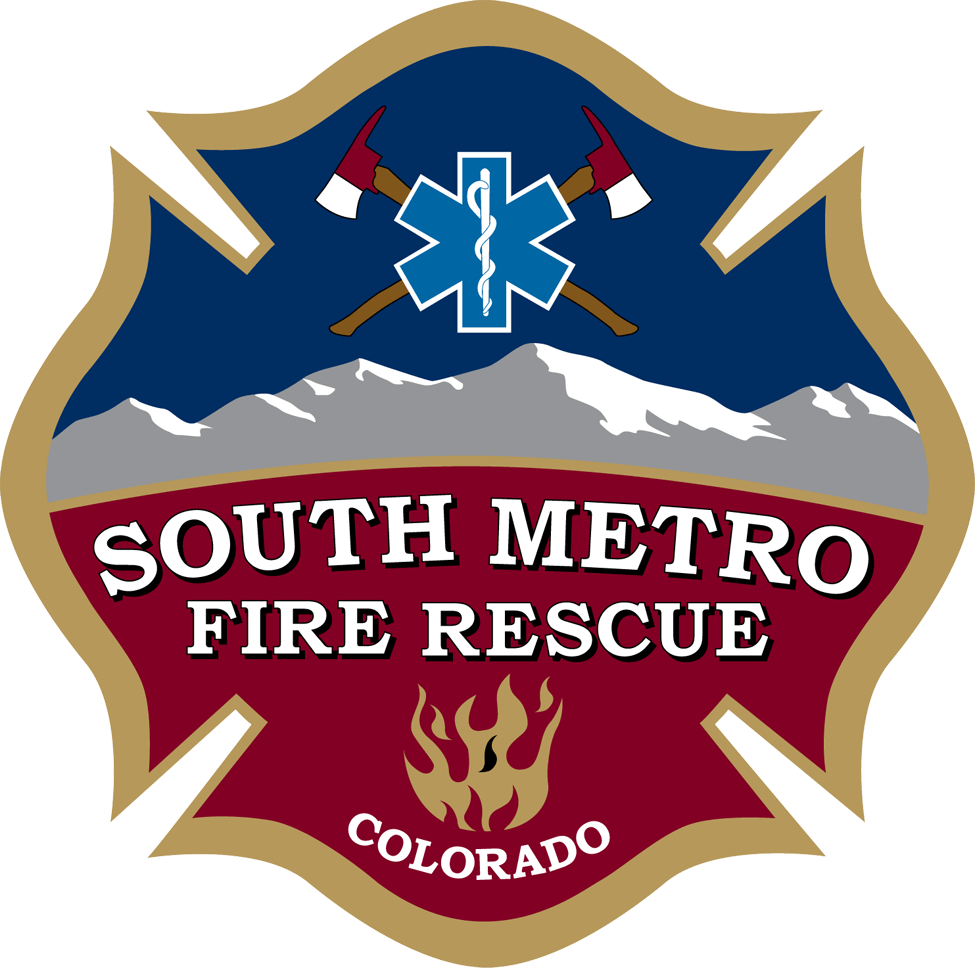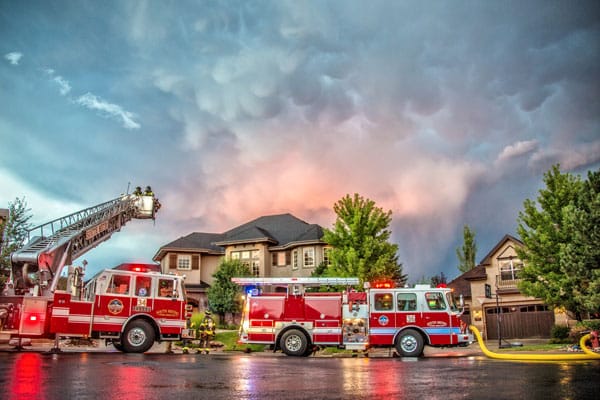When lightening strikes – 80108 Zip code ranks #2


Lightning struck a home on Buffalo Ridge Way in August 2016, igniting a small fire along a roof joist in the attic. This image shows the mammatus clouds looming in the background.
Information provided by Einar Jensen, SMFR Risk Reduction Educator; photo courtesy of Eric Hurst SMFR
Since 2011, lightning has caused 38 fires in South Metro Fire Rescue’s (SMFR) jurisdiction. Half of those fires were in buildings, while the other 19 were wildfires of varying sizes. Lightning bolts strike throughout the district, but in this period, 44 percent of the strikes that ignited fires occurred in the Parker area. The second leading area with 16 percent was the 80108 ZIP code, which includes Castle Pines, Castle Pines Village and Happy Canyon.
The other ZIP codes in the SMFR district received the remaining 40 percent of lightning-ignited fires: 80121 (8 percent), 80112 (8 percent), 80125 (5 percent), 80124 (5 percent), and 80104, 80135, 80111, 80016 and 80113 each had a single fire caused by lightning.
In that same duration, lightning struck three people in the SMFR district. Two were touching metal when a bolt of lightning struck a building, and one was hit while walking outside. None of the three was injured seriously.
The safest place during a thunderstorm is inside a building or hard-topped vehicle.
Lightning, a rapid discharge of electrical energy into the atmosphere, is among the most impressive weather phenomena on the planet. According to the National Oceanic and Atmospheric Administration, the winds within a thunderstorm or similar column of rapidly rising air causes particles of ice to crash into each other. During the crashes, smaller particles lose electrons while larger ones gain electrons. As the cloud bottoms become charged negatively, the ground below becomes charged positively. When the difference between the negative charge in the cloud and the positive charge on the ground becomes large, the negative charge starts moving toward the ground. As it moves, it creates a conductive path. When the negative charge from the cloud contacts the positively charged ground, electrical current surges through the path, which creates a visible flash of lightning. Thunder is the sound of a shock wave created by the rapid heating and cooling of the air in the lightning channel.
Lightning strikes the Earth more than 25 million times each year. Thirty people typically die in the U.S. each year from lightning strikes, according to National Weather Service records. Tragically, this year’s first lightning fatality occurred in Colorado on May 7 when a woman riding a horse was struck.
Many lightning victims are caught outside during a storm because they were not aware of the predicted weather, they did not act quickly to get to a safe place, or they return outside too soon after a storm has passed. Those victims include athletes, roofers, landscapers, farmers, families and builders. The safest place during a thunderstorm is inside a building or hard-topped vehicle. When thunder roars, go indoors.
If you hear thunder, even a distant rumble, get to a safe place immediately. Lightning can travel several miles from the actual cloud. Thunder is the perfect clue to seek shelter before dangerous lightning begins.